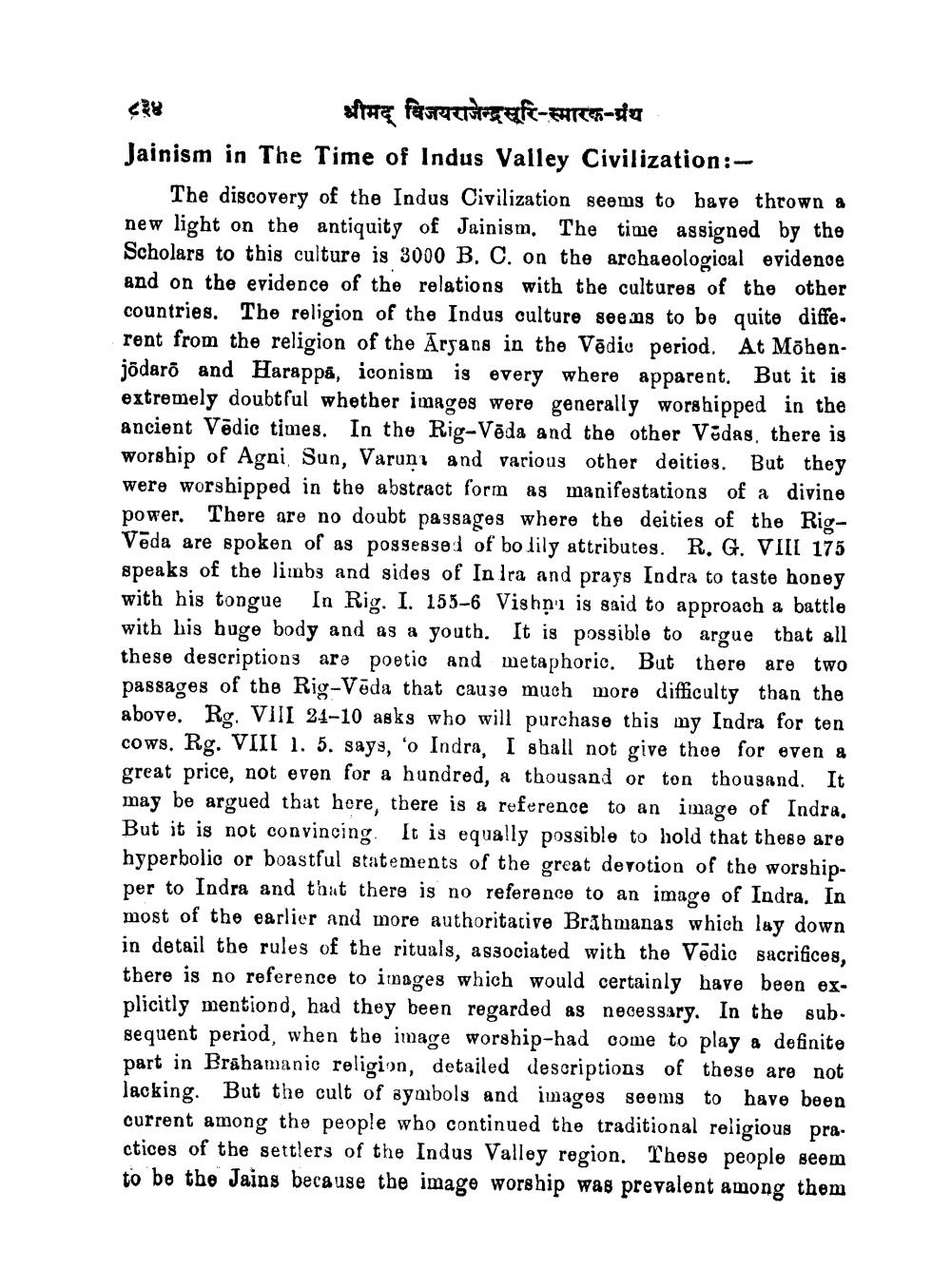________________
oftare fasrerentes efe-HT6-40 Jainism in The Time of Indus Valley Civilization:
The discovery of the Indus Civilization seems to have thrown a new light on the antiquity of Jainism. The time assigned by the Scholars to this culture is 3000 B, C, on the archaeological evidence and on the evidence of the relations with the cultures of the other countries. The religion of the Indus culture seems to be quite different from the religion of the Aryans in the Vēdic period. At Möhenjõdaro and Harappa, iconism is every where apparent. But it is extremely doubtful whether images were generally worshipped in the ancient Vēdic times. In the Rig-Vēda and the other Vödas, there is worship of Agni Sun, Varuni and various other deities. But they were worshipped in the abstract form as manifestations of a divine power. There are no doubt passages where the deities of the RigVēda are spoken of as possessed of bo lily attributes. R. G. VIIL 175 speaks of the limbs and sides of In Ira and prays Indra to taste honey with his tongue In Rig. I. 155–6 Vishạı is said to approach a battle with his huge body and as a youth. It is possible to argue that all these descriptions are poetic and metaphoric. But there are two passages of the Rig-Vēda that cauzo much more difficulty than the above. Rg. VIII 24-10 asks who will purchase this my Indra for ten cows. Rg. VIII 1. 5. says, 'o Indra, I shall not give thee for even a great price, not even for a hundred, a thousand or ton thousand. It may be argued that here, there is a reference to an image of Indra, But it is not convincing. It is equally possible to hold that these are hyperbolio or boastful statements of the great devotion of the worshipper to Indra and that there is no reference to an image of Indra. In most of the earlier and more authoritative Brāhmanas which lay down in detail the rules of the rituals, associated with the Vedic sacrifices, there is no reference to images which would certainly have been explicitly mentiond, had they been regarded as necessary. In the subsequent period, when the image worship-had come to play & definite part in Brahamanic religion, detailed descriptions of these are not lacking. But the cult of symbols and images seems to have been current among the people who continued the traditional religious practices of the settlers of the Indus Valley region. These people seem to be the Jains because the image worship was prevalent among them




